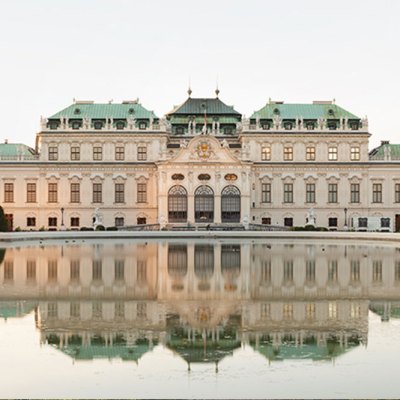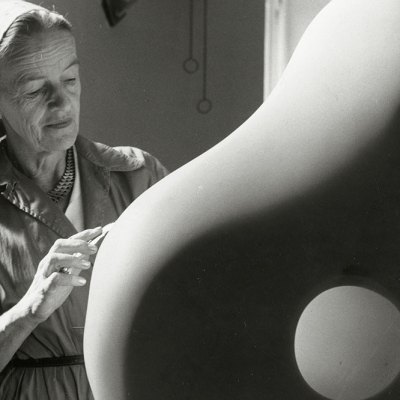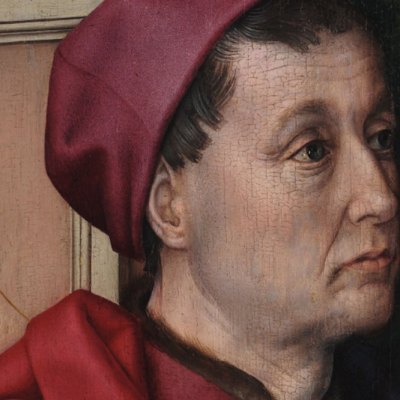From the March 2023 issue of Apollo. Preview and subscribe here.
‘His grave countenance, commanding figure, rich turban and flowing robes, made up a picture worth beholding’: in such orientalising terms Sir Richard Temple, the governor of Bombay, described the impression made on him by David Sassoon in the early 1860s. Despite having come to India as a stateless refugee, David went on to lay the foundations of a global business empire which stretched between Bombay and Shanghai, Hong Kong and London. One hundred years later, David Sassoon’s descendants would be mixing with European royalty and buying masterpieces of art. His distant descendant, the writer Siegfried Sassoon, still cherished the patriarch’s photo in the 1960s, insisting that of all his relations: ‘He was the one that really counted.’
Born in Baghdad in 1792, David Sassoon was neither an Ashkenazi nor a Sephardi, but rather a Mizrahi Jew, the name given to those communities originating in the Middle East and North Africa. The Sassoons were communal leaders and over generations they had close commercial and marital ties with other influential Mizrahi families, such as the Ezras, the Kedouries and the Gubbays. In 1830 persecution by the Mamluk Pasha forced David to leave behind beloved Baghdad and relocate first to Persia, and then, as we have seen, to Bombay (now Mumbai) in 1832, where he was quick to recognise the opportunities for trade presented by this great port city. Fluent in Arabic, Persian, Hebrew and Turkish, and quickly acquiring Hindustani, the new-comer used his contacts to start trading in cottons. Soon, he had carved out a remarkable place for his firm in the commercial highways of the British Empire, amassing a fortune from the traffic between India and China in textiles, spices, pearls, dyes, tea and, most notoriously, opium (a drug that was technically legal in Britain and which had been forcibly imposed on the Chinese market).
In 1853 he became a citizen of the British Empire – delivering his oath of allegiance in Hebrew, having never mastered the English language. British colonial officials mingled with a circle of Parsees, Jews and Indian elites at the parties thrown at Sans Souci, the grand house David had bought in the suburb of Byculla, which boasted a grand staircase and crystal chandeliers (now hanging in the city’s opera house). Nearby, he commissioned the Magen David synagogue, which had an exterior inspired by St Martin-in-the-Fields in London and an interior featuring a long poem in Hebrew comparing the patriarch and his many sons to the biblical King David.
David Sassoon (seated) with his three eldest sons, Elias David, Albert Abdullah and Sassoon David Sassoon (the latter in Western dress before leaving for England in 1858). Photo: Bridgeman Images

Such self-confidence and the hybridity of styles and materials was the hallmark of the Sassoons’ architectural footprint in Bombay, from the imposing Sassoon Docks at Colaba and the picturesque Venetian Gothic of the David Sassoon Library to Chinchpokli Jewish cemetery. The most beautiful Sassoon synagogue can be found at Pune, where the family sought shelter during the monsoon season; here, in the 1860s, they built a hospital, a leper asylum, an old people’s home. Designed by an officer in the British India Company in a neo-Gothic style, the interior of the Ohel David Synagogue is flooded with light from the stained-glass windows and contains the mausoleum of the patriarch, carved in Deccan basalt.
In recent years, the story of David Sassoon and his remarkable descendants has been a subject of interest to scholars, collectors and curators. Having succeeded in cracking the Baghdadi-Jewish dialect the family used in the correspondence preserved in the Jerusalem archives, business historian Joseph Sassoon has chronicled their success as global merchants. In December 2020 Sotheby’s New York presented ‘Sassoon: A Golden Legacy’, which fetched $5 million, far outstripping estimates and attracting bidders from all over the world. Sharon Mintz, Sotheby’s senior consultant for Judaica, attributed the result to the ‘dazzling quality of the objects together with the storied legacy of the family’. Now a major exhibition at the Jewish Museum in New York, curated by Claudia Nahson and Esther da Costa Meyer and opening this month (3 March–13 August), digs into the stories and the objects that have made the family name into both a brand and a myth.
The museum has put on shows about Jewish dynasties before, of course; only last year, it devoted an exhibition to the Ephrussi family and their lives between Odessa, Paris and Vienna, as seen through Edmund de Waal’s The Hare with Amber Eyes. Yet compared to the Ephrussis, or the Ottoman Jewish family the Camondos, the Sassoons stand out for the truly global reach of their trading empire. As one competitor remarked, ‘silver and gold, silk, gums and spices, opium and cotton, wool and wheat – whatever moves over sea or land feels the hand or bears the mark of Sassoon & Co.’ Their geographical trajectory was distinctive too, moving from the Tigris to the Thames, with London, rather than Paris, the centre of the family’s ambitions. While they were active in Jewish philanthropy too, including aid to refugees in the Shanghai ghetto, their story is defined less by the Holocaust than the rise and eclipse of the British Empire, and the new era of globalisation that it unleashed.
David Sassoon married twice and fathered 14 children in total, eight of whom were boys. In 1842, Elias Sassoon moved out to China in order to benefit from the new markets opened up in the wake of the First Opium War, eventually setting up his own firm (E.D. Sassoon & Co.). In 1858, Sassoon David Sassoon became the first of David’s children to move to Britain, where he would soon be joined by brothers and half-brothers Albert Abdullah, Reuben and Arthur. The new arrivals acquired superb mansions in west London, a 16th-century country house in Surrey, Ashley Park, and also a number of properties in Brighton and Hove. Henry Labouchère described the latter resort as ‘a sea-coast town, three miles long and three years broad, with a Sassoon at each end and one in the middle.’ Their commitment to Brighton is visible today in the magnificent, Moorish-inflected Middle Street synagogue, where different members of the family paid for the stained-glass windows, brass fixtures, sanctuary gates and electrification.
The Sassoons were beginning their ascent into the ranks of high society, but this was never simply about fitting into, but also recasting, the categories of the English establishment. Even as they were welcomed into exclusive circles, and married into important Ashkenazi families like the Rothschilds and the Gompertz, Sassoons were still widely perceived as ‘orientals’ in Victorian high society, an association that they did not hide from. This explains why the ubiquitous label ‘the Rothschilds of the East’ is so misleading: it is not simply because the Sassoons began as traders, rather than bankers; it also falsely suggests that they were following a script written by (Western) others, or conforming to a type. Instead, they played on their origins while also making new claims about belonging. Take the mausoleum built in Brighton in 1892 for Albert Abdullah: its gold-leaf dome and unmistakably Mughal crenellations winked not just at India, but at the Royal Pavillion nearby (it was later converted into a pub).
Magen David Synagogue in Byculla in Mumbai (formerly Bombay), built with funds from David Sassoon in 1861. Photo: Alamy Stock Photo

In the ‘Spy’ cartoon in Vanity Fair in 1890, Reuben Sassoon appears in white tie, clutching opera glasses; his love of horseracing and
cards made him a fixture of Sandringham and the Prince of Wales’ set. Yet his English manners did not conflict with a sense of Jewish patriotism: he was a financial guarantor and important lender of superb ritual objects to the landmark ‘Anglo-Jewish Historical Exhibition’ of 1887, which was held at the Royal Albert Hall, and which celebrated the Jews as an ancient and global people. No less adept at negotiating different identities was Rachel, the daughter of S.D. Sassoon. Born in Bombay, she enjoyed posing in oriental dress at costume balls in London, as revealed in carte-de-visite photographs. Temporarily disowned by the family for converting to Christianity upon marriage to Frederick Beer, she has the distinction of being the only woman to have edited two national newspapers, the Sunday Times and the Observer, and what is more, to have edited both at the same time, using her position to expose the villain in the Dreyfus affair. By contrast, her love of the arts is less known, including her fondness for Corot, Watts, Rubens and Rosa Bonheur; the Constable she owned, Salisbury from the Fields, now hangs in the Louvre.
The Sassoon family at one of their homes in Pune, from an album of 1869. British Library, London. Courtesy Jewish Museum, New York

As Nahson and Da Costa Meyer put it: ‘Diaspora made collectors of the Sassoons: the objects they sought bore the traces of homelands both lost and acquired.’ With one branch of the family based in Hong Kong and Shanghai, the arts of Asia exerted a long-standing fascination: we might think of Victor Sassoon’s survey of ivory production, or the outstanding Chinese ceramics assembled by his cousin Percival David, including pieces formerly in the Forbidden City or owned by the Qing emperors. If some family members were specialist collectors, others stood out for creating a rich synthesis of different traditions, weaving Middle Eastern, South Asian, East Asian and European elements together into new and unexpected constellations.
David Solomon Sassoon (1880–1942) is remembered today as one of the great bibliophiles of the 20th century. His deep learning was shaped by his mother Fahra, later Flora, Sassoon, who in around 1900 managed the Bombay office of David Sassoon & Co., and thus has a claim to be the first woman to steer a major global business. After moving to London she published articles in Jewish Forum, copied out Hebrew liturgical manuscripts and ran her house on Bruton Street as a ‘salon’ for scholars of all nations. In 1910 Flora and her son had travelled back to the patriarch’s home in Baghdad (called Beit Abu-Reuben) where David also studied the Torah scrolls that his distant relatives had bequeathed to the synagogue generations before. As a collector he tracked down numerous heirlooms related to the family’s Baghdadi roots, such as the silver banner in the shape of a hand (hamsah) which had been carried by Iraqi Jews on pilgrimages to the tombs of Ezra, Ezekiel and Joshua, sacred places that Sassoon ancestors had helped to maintain.
Moonlit Landscape (1874) Jean-Baptiste-Camille Corot. Private collection (formerly belonging to Rachel Sassoon Beer). Picture Art Collection/Alamy Stock Photo

A deeply observant Jew, David strongly disapproved of his relatives’ worldliness, writing to sister Rachel Ezra: ‘I see all the Sassoons, one by one, going away from the pale. Another nail in the coffin.’ Instead, he devoted his energies to assembling at Bruton Street an outstanding collection of Hebrew manuscripts which also paid homage to Jewish heritage in the Middle East; high- lights included the 14th-century Fahri Bible, which he acquired after much persistence from the British consul in Aleppo in 1913, or the superbly decorated Fath Nama by Imrani, a 17th-century retelling of stories from the books of Joshua, Ruth and Samuel in Judaeo-Persian, which is now in the British Library. In the catalogue for the New York exhibition Nahson stresses that David’s library was a living collection, which participated in the ceremonies and events of the Jewish household. In the Ohel Dawid, published in 1932, the collector drew up a learned catalogue of his treasures, which grew to encompass 1,200 Hebrew and Samaritan manuscripts, alongside exuberant ketubot, or Jewish marriage contracts, with dazzling illuminated borders, Passover Haggadahs and an Esther scroll (megillah) from India, which freely mixed Eastern and Western dress, including women shown with the bindi on their foreheads.
A very different, but contemporaneous, example of Sassoon collecting can be found among David’s worldly cousins. At once politician, soldier, trustee and tastemaker, Philip Sassoon (1888–1939) was a legendary host of parties in interwar Britain (Lady Horner justly remarked ‘few rich men so understood how to share enjoyment’). His cultural horizons were entirely secular and set by his Parisian upbringing – his mother was Gustave de Rothschild’s daughter, Aline – and he filled his mansion at 25 Park Lane with outstanding examples of Ancien Régime furniture and decorative arts. Described by Harold Nicholson as a ‘strange, lonely, un-English little figure’, Philip defiantly and wittily conjured up oriental references and non-European civilisations at his Kentish seat of Port Lympne, with its Moorish courtyard, tent room and Assyrian frieze.
Carte-de-visite of Rachel Sassoon Beer (1858–1927); photograph by H.S. Mendelssohn. Beinecke Rare Book and Manuscript Library, Yale University

Philip was more than a flamboyant peacock, though, and we should remember the sincerity of his effort to pre- serve British national heritage. In his official capacity as First Commissioner of Works from 1937, Philip Sassoon restored the painted hall at the Royal Naval College, Greenwich, refurnished the Stuart rooms at Hampton Court and oversaw the excavations of Whitehall Palace. The 18th century, French and English, was at the heart of his passions, a period not just of elegant living and new ideas, but also global exchange. The ten loan exhibitions he staged at Park Lane introduced a British public not just to the opulence of the French 18th century (in the show ‘Three French Reigns’), but also the intrigue of the ‘conversation piece’ and the painting of Johann Zoffany. Beyond their service to charity, these domestic exhibitions were exercises in the education of public taste.
In this enterprise Philip was seconded by some exceptional Sassoon women. His beloved sister Sybil is celebrated as a muse to artists like Sargent and Orpen, but also as chatelaine of Houghton Hall, where she worked to revive the splendour of William Kent’s original design. His cousin Hannah Gubbay (née Ezra), too, was another valued collaborator, and in gratitude Philip gave her his self-consciously English country house, Trent Park. After the war she lived in a cottage on the estate where she created a private museum of furniture, textiles and ceramics. The terrible fire at Clandon Park in 2015 destroyed a large part of the collections that she ultimately bequeathed to the National Trust, but the quality of what remains is astonishing. Porcelain for the duc d’Orléans from the Tournai manufactory; a Korean celadon duck; a famille verte mantelpiece garniture from Kangxi workshops; a Savonnerie firescreen signed by Pierre Parisot; a lacquered William and Mary cabinet: in John Pope-Hennessy’s estimation, she was a ‘collector of genius’.
A famille verte garniture de cheminée, China, Kangxi period (1662–1722), ceramic and hard-paste porcelain. Clandon Park (formerly in the collection of Hannah Gubbay, née Ezra

Such praise has never been granted to Mozelle Sassoon (née Gubbay; 1872–1964), wife of Meyer Elias Sassoon, although the refined contents of her Hamilton Place home, and the public exhibitions held there, merit comparison with Park Lane. Born in Malabar Castle, Bombay, she grew up on the Boulevard Malesherbes in Paris, and after moving to London she remained a lifelong Francophile. Among many 18th-century pictures she owned Largillière’s La Belle Strasbourgeoise (1703), in her triangular black hat, and Pater’s Fête Champêtre (c. 1730), the perfect complement to her extensive collections of Sèvres, rococo silver and gold snuffboxes. Mozelle’s commitment to public culture can be deduced not just from her domestic exhibitions, but also the funds she donated to the National Gallery and St Paul’s Cathedral, and even her forgotten contribution to modern architecture. Seeking to commemorate her son Reginald Ellice who died in a riding accident in 1933, she commissioned the first working-class apartment block in Britain built in the modernist style.
Miniature mountain, probably 19th century, China. British Museum, London (formerly in the collection of Victor Sassoon). Photo: © Trustees of the British Museum

By engaging with these personalities who moved between continents and cultures, especially the over- looked Sassoon women, the show at the Jewish Museum New York promises to tell the family story in a new way, drawing connections between people, places and aesthetics rarely considered together. The range of collections discussed is unprecedented, mixing Gainsborough portraits with Torah shields from Lviv, Yemenite manuscripts and Chinese scroll paintings. The range of exhibits track how the family adapted to the forces of commerce and empire, but also left their mark on both heritage institutions and urban skylines, from the British Museum to the Shanghai Bund. The dynasty’s fortunes waxed and waned with British imperial might, and historian Joseph Sassoon argues, with some exaggeration, that in business terms, hitching themselves to the British aristocratic establishment was a ‘fatal’ mistake. Indian independence in 1947, followed by the Chinese Communist revolution, spelled the end of their dominance in Asia: as Victor Sassoon (1881–1961) summarised, ‘I gave up India and China gave me up’. Their dizzying ascent, though, as well as their beguiling collections, speak to the family’s genius for adaptation and reinvention.
From the March 2023 issue of Apollo. Preview and subscribe here.


